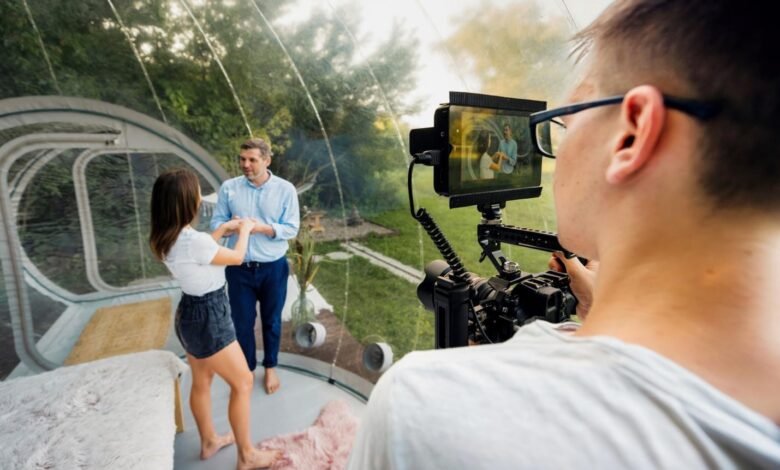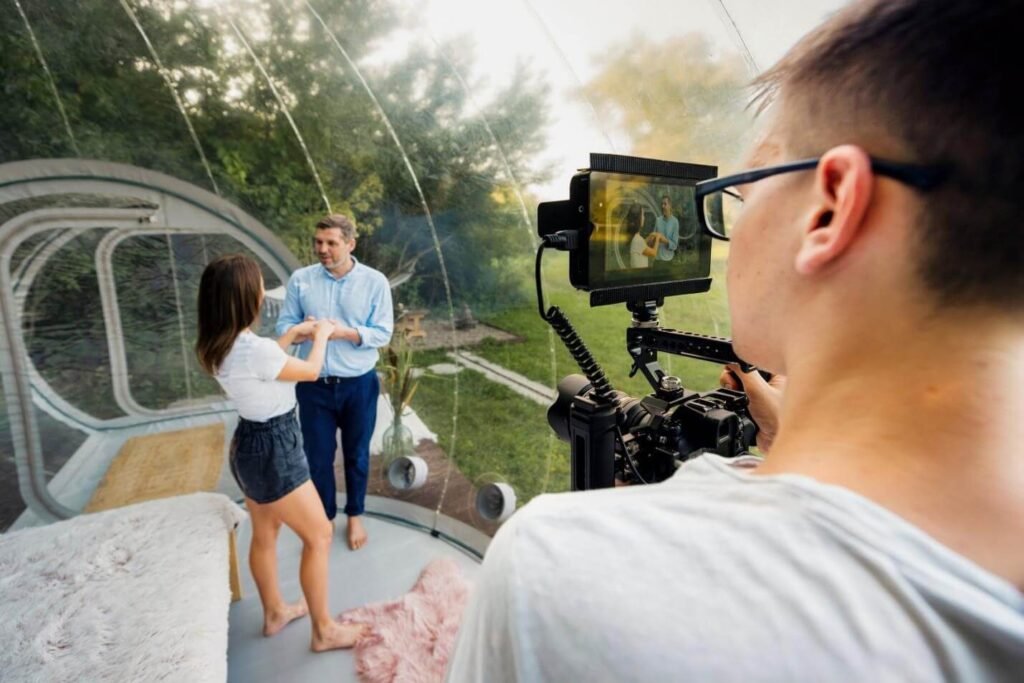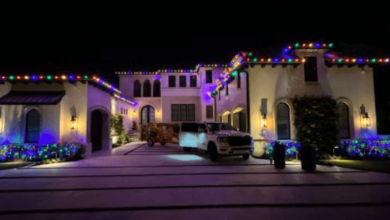A 12-Step Guide to Micro-Budget Filmmaking

Every filmmaker begins with an idea that feels worth pursuing. They feel extremely excited about their vision until they start realizing the harsh realities of finances. Turning an idea into a complete film requires dedicated planning and a proper strategy, without which your film can face major roadblocks midway. This article will give a step-by-step guide to micro-budget filmmaking and why you might need a battery generator for it.
Reasons for Making Micro-Budget Films
Many creators wonder whether pursuing micro-budget filmmaking is a wise choice or if limited resources will hold them back. The truth is that micro-budget filmmaking is an adventure worth taking. Here is why:
1. Creative Freedom
Working within a limited budget gives you full authority over your project. You are not answering to studios, investors, or anyone trying to mold your work into a marketable product. This allows you to explore unconventional stories, develop unique characters, and present your ideas without compromise. When you make every decision yourself, the film becomes a direct reflection of your creative identity. This control is rare in larger productions and often leads to more honest and distinctive storytelling.
2. Skill Development
Micro-budget filmmaking requires you to stay adaptable. When you have fewer people on set, you often take on multiple roles. For instance, you may have to coordinate logistics, direct actors, manage sounds, or edit videos. All these roles help you develop skills that are not possible to acquire in a traditional film set, in which you remain stuck to one role only. These experiences will help you build technical knowledge, improve your problem-solving abilities, and teach you how to make the most of the available resources.
3. Portfolio Building
When you build a successful and sustainable film production, it will be a great addition to your portfolio. Micro-budget filmmaking shows that you can take a concept, organize production, and deliver a finished product without needing too many resources. Over time, these projects form a credible portfolio that can attract collaborators, funding opportunities, and future commissions. This can even help you land even bigger projects further in your career. Large filmmakers are always looking for people who know how to manage budgets while also bringing films that keep people hooked to the screens.
4. Indie Recognition
The independent film world thrives on fresh ideas and unique stories. Film festivals, streaming platforms, and online audiences are constantly looking for new voices and fresh perspectives. Micro-budget filmmaking stands out because it carries a raw and unfiltered energy that commercial productions usually lack. Recognition in this space depends more on storytelling and intent than technical perfection. Many successful filmmakers began their careers with low-budget projects that resonated because they were sincere, focused, and executed their ideas with clarity.
Now, let’s have a look at how to start your journey of micro-budget filmmaking:
See also: The Fusion of Vibe beats with an Israeli DJ in Miami, FL
Step-by-Step Guide to Micro-Budget Filmmaking
Completing a film without major funding is possible and increasingly common among first-time and independent filmmakers. The process of micro-budget filmmaking requires careful planning and the ability to make deliberate choices.
Here is a step-by-step guide on how to do it:
1. Outline a Realistic Budget
Start by calculating exactly how much funding is available. After that, make a detailed list of possible expenses, such as equipment, transportation, food, locations, and post-production costs. This will help you identify areas where you can make trade-offs and where you just cannot compromise.
2. Choose or Write a Story That Fits the Budget
Let your financial limits guide the story. Go for scripts that use few locations, a manageable cast, and minimal set requirements instead of focusing on stunts, crowd scenes, or detailed sets. Stories built around characters, dialogues, and atmosphere usually work best in micro-budget filmmaking.
3. Finance the Film
Funding a small film usually involves combining several modest sources to build a workable budget. You might start by setting aside a personal amount, then raise the rest through crowdfunding or micro-grants. Look for local arts organizations or nonprofits that support new filmmakers. Avoid relying on one solution and build a flexible plan that allows you to adjust in case of an emergency. Always aim to secure at least eighty percent of the budget before production begins, while the rest of the money should also be secured when your film is still in the beginning phase.
4. Assemble a Passionate Team
Your crew and cast are the backbone of the entire project, so find collaborators who are genuinely interested in the story and are willing to contribute their skills and time. Many emerging filmmakers, actors, and technicians are eager to gain experience and collaborate on projects that require more adaptability. It is important to have clear conversations about expectations and time commitments right at the start to avoid any conflict down the road.
5. Scout Free or Low-Cost Locations
Locations’ fees can quietly consume your budget. Focus on places that are visually appropriate, easy to access, legally safe to use, and do not force you to break the bank. This may include your own home, a friend’s apartment, or public areas where permission is easy to obtain. Always check for sound and lighting conditions, as these things affect post-production. Consider how those places serve the story and what practical challenges they may present during filming. Plan your scenes around spaces that require minimal setup and allow for extended time without extra charges.
6. Gather Props and Costumes
Make proper use of what is already available to you in order to cut costs at this step. Thrift stores, donation bins, and personal belongings can often provide everything you need to establish character and tone. The costumes should be matched carefully with the personality, background, and context of each character. Avoid items that distract or appear out of place on camera, and make sure everything supports the story and does not distract the viewer.
7. Buy or Rent Gear
Professional-quality equipment is more accessible now than ever before. Many cities have rental hubs or filmmaker co-ops that offer gear at affordable rates. To start, focus on securing clear audio and basic lighting setups, as these gadgets impact the audience experience more than high-end cameras. If you plan to do several projects, purchasing entry-level gear is usually worth it. Never compromise on sound, as poor audio makes even the best visuals difficult to watch. If possible, try to have backup gear and test everything in advance to avoid disruptions on set.
8. Keep Shoot Days Efficient and Well-Planned
Time is one of the most valuable resources during micro-budget filmmaking. To avoid unnecessary delays and budget overruns, every shoot day should be mapped out in advance with clear objectives. Prepare a detailed shooting schedule that includes scene breakdowns, estimated time per setup, and buffers for unexpected issues. Distribute call sheets ahead of time so that each team member knows when and where they are needed. Keep the crew informed and focused by reviewing the plan at the start of each day. When everyone understands the flow of the day and their responsibilities, it becomes easier to stay on track and maintain momentum.
9. Use Free or Affordable Editing Software
Post-production tools like DaVinci Resolve, HitFilm Express, or Lightworks offer strong features with minimal fees. Most of the tools also have free versions that you can use in the beginning. Choose a platform that suits your workflow and learn it thoroughly before diving into detailed edits.
10. Get Feedback from Trusted Peers
Before finalizing the film, share it with people who understand the basics of the film industry. Choose individuals who understand narrative structure, film language, or at least your concept of the film. Constructive feedback can highlight pacing issues, unclear scenes, or technical flaws. While final decisions remain yours, an outside perspective can help elevate the quality of the film.
11. Submit to Indie Film Festivals or Share Online
Once your low-budget indie filmmaking project is complete, explore options for distribution so that your film can reach a larger audience. Many film festivals now welcome micro-budget work, so research submission guidelines and focus on festivals that align with your film’s style or themes. If festival entry is not feasible, use online platforms to build your presence. Releasing your work strategically on online platforms alongside teasers, behind-the-scenes clips, or director notes can help you build a good audience.
12. Keep Creating and Improving with Each Film
Growth as a filmmaker comes through consistency, persistence, and reflection. Every micro-budget filmmaking process teaches something valuable about planning, teamwork, and the craft of storytelling. Rather than chasing perfection with your first film, aim to complete it with care and clarity and move on to the next film. Learn your lessons and keep on improving with feedback, which will help you master the art of filmmaking.

The Role of Portable Power Station in Filmmaking
Power is one of the most overlooked yet essential elements in a micro-budget production. From charging batteries to powering lights, recorders, and editing tools, every piece of gear depends on stable power.
This is where a portable power station or a battery generator becomes an irreplaceable part of your micro-budget filmmaking toolkit. The Jackery Solar Generator 1000 v2 is one of the top choices for independent creators. With the Jackery Solar Generator 1000 v2 in hand, you are sure that the electricity problems do not force you to drag your projects, which can otherwise disturb your whole budget. These battery generators are also necessary for mobile filmmaking, where you need to move frequently and you never know the status of electricity at your desired location.
It is a compact yet powerful unit that delivers exceptional performance in both controlled and off-grid environments. With a 1070Wh storage capacity and 1500W output, it handles high-demand equipment like cameras, projectors, TVs, portable refrigerators, and much more.
The Jackery Solar Generator 1000 v2 brings a lot of reliability and convenience to your disposal. It features multiple output ports, including USB-A, USB-C, and standard AC outlets, which means you can charge and operate several devices at once without overloading the system.
Its emergency fast-charging mode enables a full recharge in under 1 hour, allowing you to power up quickly before heading to a micro-budget film shoot—without disrupting your schedule.
Weighing just 24.2 pounds with a foldable handle and compact build, the inbox Jackery Explorer 1000 v2 Portable Power Station fits easily into a car trunk or equipment case.
The Jackery Solar Generator 1000 v2 comes with top-notch safety features. With upgraded ChargeShield 2.0 technology, it is built with 62 forms of protection and rapid-response UPS functionality that ensures your devices remain powered during outages or surges.
For micro-budget filmmakers, the Jackery Solar Generator 1000 v2 strikes a balance between affordability, power, and ease of use. It keeps your production moving without compromising on reliability or performance, no matter where your story takes you.
Wrapping-Up
Micro-budget filmmaking is about using your resources strategically to create a compelling film that leaves a lasting impression. From writing a story that fits your means to assembling a committed team, each step demands clarity and discipline. The journey might be demanding, but it’s also rewarding in ways that big-budget productions can’t always match. In this process, a reliable power solution like the Jackery Solar Generator 1000 v2 ensures that your production does not stall due to basic power limitations, giving you constant access to reliable electricity that will help you complete your project in a much faster and more efficient manner.





